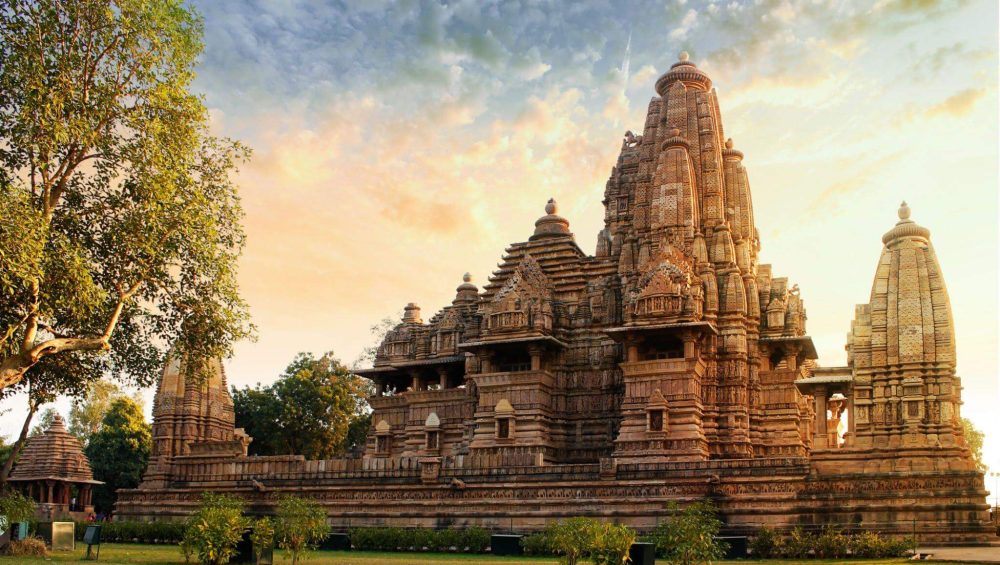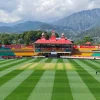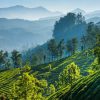Planning a Madhya Pradesh Tour: Exploring Central India’s Hidden Treasures
When it comes to exploring the heart of India, there’s no place quite like Madhya Pradesh. This incredible state is a treasure trove of history, culture, and natural wonders that can mesmerize any traveler. Picture this: ancient temples standing tall in the sunlight, surrounded by lush jungles where tigers roam freely, and vibrant festivals filling the air with joyous melodies. Madhya Pradesh Tour offers a captivating blend of experiences that cater to every kind of traveler.
The best time to visit this diverse land is crucial for an unforgettable experience. Imagine visiting during the winter months, from October to March, when the weather is pleasantly cool. This is the ideal time to explore the historical marvels like the Khajuraho temples, known for their intricate sculptures that narrate tales of love and mythology. The jungles of Kanha and Bandhavgarh are also at their best during these months, making it a paradise for wildlife enthusiasts. Enjoy exciting safaris to see Bengal tigers and other beautiful animals in their natural homes, living in harmony with nature..
Spring, from March to June, brings a burst of colors to Madhya Pradesh Tour. The landscapes are adorned with blooming flowers, creating a picturesque setting. Although the weather starts to get warm, this is the perfect time for nature lovers to visit places like Pachmarhi, the only hill station in Madhya Pradesh. The scenic beauty and pleasant climate make it a delightful escape.
However, it’s wise to avoid the monsoon season, from July to September, as the heavy rains can disrupt travel plans and make outdoor activities challenging. The roads might become muddy, and certain areas could be inaccessible.
In this comprehensive guide, we’ve provided you with valuable insights to plan your trip to Madhya Pradesh wisely. Whether you’re a history buff, wildlife enthusiast, or someone seeking serenity in nature, Madhya Pradesh welcomes you with open arms. So, pack your bags and get ready for an enchanting journey through this magical state. Your adventure awaits, promising memories that will last a lifetime.
Best Time to Visit Madhya Pradesh
Understanding Madhya Pradesh’s Climate
Before we delve into the specifics of when to visit, it’s crucial to understand Madhya Pradesh’s climate. The state experiences three distinct seasons:
- Summer (March to June): Summers in Madhya Pradesh are scorching, with temperatures soaring above 40°C (104°F). It’s not the ideal time for outdoor activities, and wildlife sightings can be challenging due to dense vegetation.
- Monsoon (July to September): The monsoon season brings relief from the heat, with lush green landscapes and rejuvenated water bodies. However, heavy rainfall can make travel inconvenient and hinder outdoor adventures.
- Winter (October to February): Winter is undoubtedly the best time to visit Madhya Pradesh. The weather is pleasant, with temperatures ranging from 10°C to 25°C (50°F to 77°F), making it ideal for exploring both historical sites and wildlife sanctuaries.
The Ideal Months for a Visit
Now that you have an overview of Madhya Pradesh’s climate let’s break down the ideal months to plan your visit:
October to March: A Winter Wonderland
October: The onset of winter in Madhya Pradesh Tour is a delight for travelers. The weather is crisp and cool, perfect for exploring iconic destinations like Khajuraho, Gwalior, and Bhopal. Wildlife enthusiasts will also find this season excellent for tiger safaris in parks like Bandhavgarh and Kanha.
November to February: These months constitute the peak tourist season in Madhya Pradesh Tour. The days are sunny and pleasant, while the nights can be chilly. This is the best time for a pilgrimage to Ujjain, a dip in the holy Narmada river at Maheshwar, and experiencing the tribal culture at Bhil and Bhilala festivals.
April to June: Summer Adventures
April: While the temperatures start to rise, this is still a relatively bearable time to visit. It’s a great period for exploring the vibrant city of Indore, with its bustling markets and delectable street food.
May to June: As summer reaches its peak, it’s advisable to head to the hill stations of Pachmarhi and Amarkantak to escape the heat. These serene locations offer respite from the scorching sun, surrounded by lush greenery and cascading waterfalls.
July to September: Monsoon Marvels
July to September: Madhya Pradesh transforms into a lush paradise during the monsoon season. While heavy rains can disrupt plans, this is an excellent time for nature enthusiasts and photographers. The waterfalls in places like Pachmarhi and Bhedaghat are at their majestic best.
Festivals and Events
To truly immerse yourself in Madhya Pradesh’s vibrant culture, consider timing your visit with one of its festivals:
- Khajuraho Dance Festival (February): Witness exquisite classical dance performances against the backdrop of Khajuraho’s stunning temples.
- Diwali (October/November): Experience the festival of lights in the heart of India, where traditions come alive in a unique and beautiful way.
- Navratri (October): Revel in the nine nights of cultural performances and devotion across the state.
How to Reach Madhya Pradesh
Getting to Madhya Pradesh Tour
By Air
The most convenient way to reach Madhya Pradesh is by air. The state boasts several major airports, with Devi Ahilya Bai Holkar Airport in Indore and Raja Bhoj Airport in Bhopal being the primary gateways. These airports are well-connected to major Indian cities, making it easy for travelers to reach Madhya Pradesh from anywhere in the country.
By Train
For those who prefer the scenic route, traveling to Madhya Pradesh by train is an excellent option. The state is well-connected to major cities like Delhi, Mumbai, Kolkata, and Chennai via an extensive railway network. Some of the prominent railway stations in Madhya Pradesh include Bhopal Junction, Indore Junction, and Gwalior Junction.
By Road
Madhya Pradesh boasts an extensive road network, making it accessible by road from neighboring states and cities. National highways like NH 7, NH 12, and NH 27 provide smooth connectivity. You can opt for a comfortable bus journey or the flexibility of a self-driven car to explore the state at your own pace.
1.Bhopal: The City of Lakes

Welcome to Bhopal, a city that encapsulates the essence of India’s cultural heritage, natural beauty, and historical significance. As we delve into this enchanting destination on your Madhya Pradesh tour, we invite you to embark on a virtual journey through its captivating landscapes, rich history, and vibrant culture. Discover why Bhopal deserves a top spot on your travel bucket list during your Madhya Pradesh tour.
A Glimpse into Bhopal’s History
The City of Lakes
Nestled in the heart of Madhya Pradesh, Bhopal is often referred to as the “City of Lakes.” Its serene and picturesque water bodies, such as Upper Lake and Lower Lake, have not only earned it this endearing title but also made it a natural oasis amidst urban life. These lakes offer a tranquil escape for locals and tourists alike, where you can enjoy boat rides, picnics, and the breathtaking sunset views.
A Royal Heritage
Bhopal boasts a rich historical tapestry that dates back to the reign of the Parmar Kings. However, it was during the 18th century that the city truly flourished under the rule of Nawab Dost Mohammad Khan. His vision and architectural prowess left behind stunning monuments like the Shaukat Mahal and the Gohar Mahal, which stand as testaments to Bhopal’s royal heritage.
The Architectural Marvels of Bhopal
The Sanchi Stupa
A short drive from Bhopal takes you to the UNESCO World Heritage Site, the Sanchi Stupa. This ancient Buddhist monument, dating back to the 3rd century BC, is a marvel of ancient Indian architecture. Its intricate carvings and the serene atmosphere around it make it a must-visit destination for history enthusiasts and spiritual seekers.
Taj-ul-Masajid
Bhopal is also home to the Taj-ul-Masajid, one of the largest mosques in Asia. Its impressive structure, adorned with exquisite marble domes and minarets, is a blend of Mughal and Indian architectural styles. The tranquility within its walls invites visitors to reflect and appreciate the city’s diverse cultural influences.
Cultural Diversity and Festivals
Bhopal Utsav
Bhopal is a melting pot of cultures, and this diversity is beautifully showcased during the annual Bhopal Utsav. Held in October, this vibrant festival celebrates the city’s cultural richness through music, dance, art exhibitions, and traditional cuisine. It’s an excellent opportunity to immerse yourself in the local culture and connect with the friendly people of Bhopal.
Diwali in Bhopal
Diwali, the festival of lights, is celebrated with unparalleled enthusiasm in Bhopal. The entire city comes alive with colorful decorations, sparkling lamps, and the sweet aroma of traditional sweets. Witnessing Diwali in Bhopal is a sensory delight and a memory that will last a lifetime.
Bhopal’s Gastronomic Delights
Poha and Jalebi
When in Bhopal, don’t miss the chance to savor the local delicacies. Poha (flattened rice cooked with spices) and Jalebi (deep-fried sweet spirals) are breakfast favorites that reflect the city’s unique culinary identity. Enjoying these treats at a local eatery is an experience in itself.
Street Food Paradise
Bhopal’s streets are lined with food stalls offering an array of delectable dishes. From spicy chaats to mouthwatering kebabs, the street food scene in Bhopal is a paradise for food lovers. Make sure to try the iconic Bhopali Biryani and Seekh Kebabs during your visit.
Natural Wonders Surrounding Bhopal
Bhimbetka Caves
A short drive from Bhopal leads you to the Bhimbetka Caves, another UNESCO World Heritage Site. These ancient rock shelters are adorned with prehistoric cave paintings, some of which are over 30,000 years old. Exploring these caves is like stepping back in time and witnessing the artistry of our ancestors.
Satpura Tiger Reserve
For wildlife enthusiasts, the Satpura Tiger Reserve offers an opportunity to encounter the majestic Bengal tiger in its natural habitat. The reserve’s diverse flora and fauna, along with thrilling jungle safaris, make it a must-visit destination for nature lovers.
2.Khajuraho: A UNESCO World Heritage Site
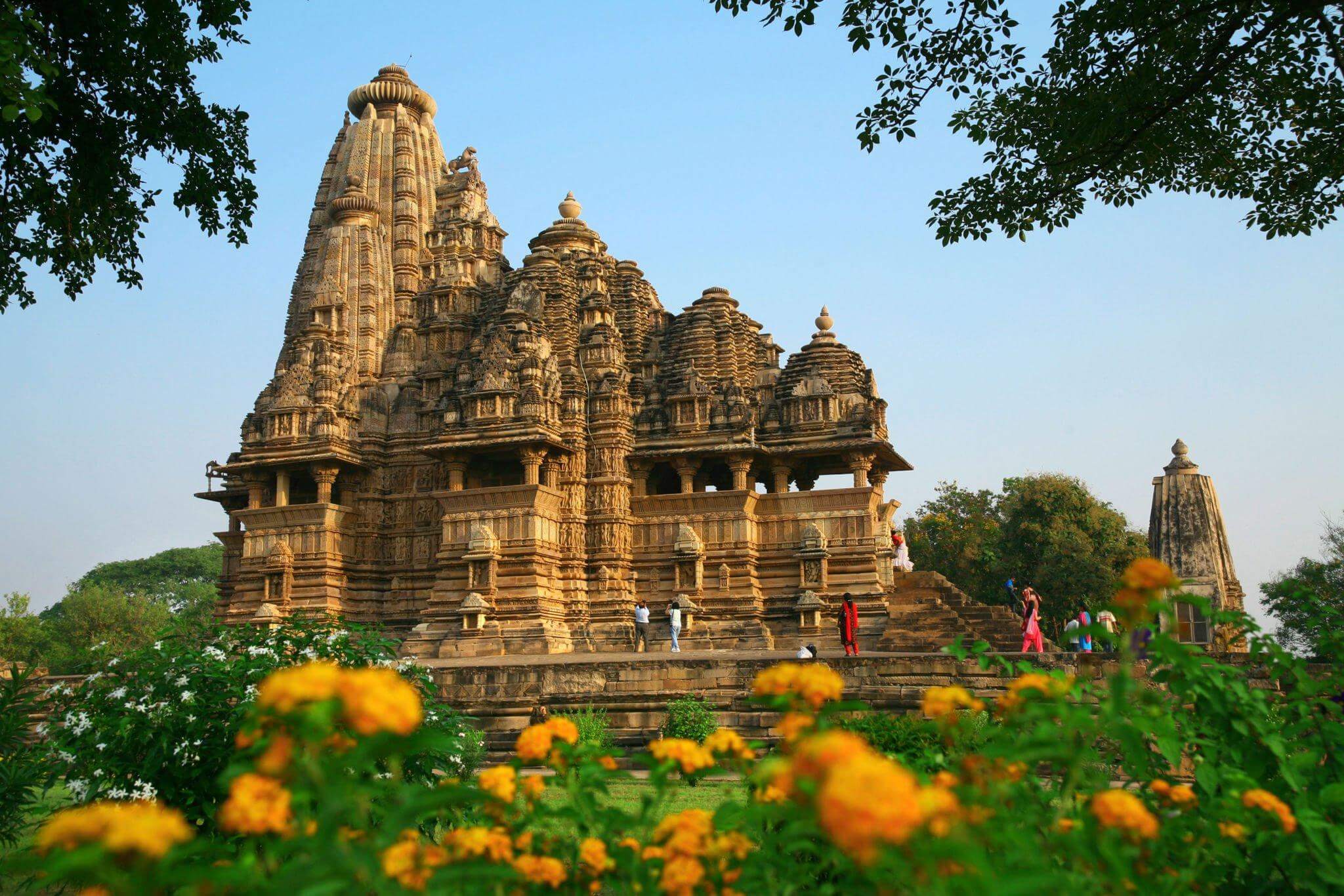
Khajuraho, a UNESCO World Heritage Site, stands as a testament to India’s rich cultural and architectural heritage and is a must-visit on your Madhya Pradesh tour. Nestled in the heart of Madhya Pradesh, this historical gem is renowned for its awe-inspiring temples, intricate carvings, and a profound sense of spirituality, making it a highlight of your Madhya Pradesh tour. In this article, we will take you on a virtual journey through Khajuraho, providing you with a comprehensive overview of this remarkable destination during your Madhya Pradesh tour
The Enigmatic Khajuraho Temples
A Glimpse into History
Khajuraho, often referred to as the “Land of a Thousand Temples,” is home to a stunning ensemble of temples that date back to the Chandela dynasty in the 9th and 10th centuries. These temples were constructed under the patronage of the Chandela rulers, who were known for their love for art and architecture.
Architectural Marvels
What sets Khajuraho apart from other historical sites in India is its architectural brilliance. The temples here are renowned for their intricate carvings that depict various aspects of life, mythology, and sensuality. The intricate detailing on these temples showcases the exceptional craftsmanship of the artisans of that era.
A Spiritual Journey
The temples in Khajuraho are divided into three groups: Western, Eastern, and Southern. Each group has its unique charm and significance. The Western Group, which is the most famous, comprises some of the most exquisite temples, including the Kandariya Mahadev Temple, Lakshmana Temple, and Devi Jagadambi Temple.
UNESCO World Heritage Status
In 1986, Khajuraho was granted UNESCO World Heritage status, recognizing its cultural and historical significance on a global scale. This prestigious designation has not only helped in the preservation of the temples but also boosted tourism in the region, making it a must-visit destination for history enthusiasts and art aficionados.
The Mystique of Khajuraho
Intriguing Sculptures
One of the most intriguing aspects of Khajuraho’s temples is the depiction of sensuality in its carvings. These sculptures, often misconstrued, are a reflection of the celebration of life, love, and beauty. They provide a glimpse into the liberal and inclusive society that existed during the Chandela dynasty.
Light and Sound Show
To truly immerse yourself in the history and mystique of Khajuraho, do not miss the mesmerizing Light and Sound Show held in the Western Group of temples. This captivating show narrates the history of Khajuraho and brings the temple complex to life in the evening hours.
Exploring Khajuraho
The Archaeological Museum
To delve deeper into the history and significance of Khajuraho, a visit to the Archaeological Museum is a must. Here, you can view a remarkable collection of sculptures, artifacts, and historical relics that provide further insights into the region’s rich heritage.
Panna National Park
Khajuraho is not just about its temples; it also offers an opportunity to connect with nature. The nearby Panna National Park is home to diverse wildlife, including tigers, leopards, and various species of birds. A safari through this park allows you to explore the natural beauty of the region.
Must-Visit Temples
Kandariya Mahadeva Temple
Dedicated to Lord Shiva, the Kandariya Mahadeva Temple is the largest and most magnificent temple in Khajuraho. Its towering spire, adorned with exquisitely carved figures, is a sight to behold. Inside, you’ll find a sanctum housing a Shiva Lingam, a sacred representation of Lord Shiva.
Lakshmana Temple
The Lakshmana Temple, dedicated to Lord Vishnu, is another architectural masterpiece. Its intricate carvings narrate tales from the Ramayana and Mahabharata, adding an enriching cultural experience to your visit.
Chitragupta Temple
Dedicated to the Sun God, Chitragupta Temple is famous for its vividly detailed sculptures and the 11-headed idol of Surya, the Sun God. It’s a photographer’s paradise, capturing the play of light and shadow on its artistic façade.
Local Cuisine
No visit to Khajuraho is complete without savoring the local cuisine. Indulge in traditional dishes such as Dal Bafla, a delightful combination of lentils and wheat cakes, or the sweet delicacy of Khoya Jalebi.
3.Gwalior: A Royal Retreat
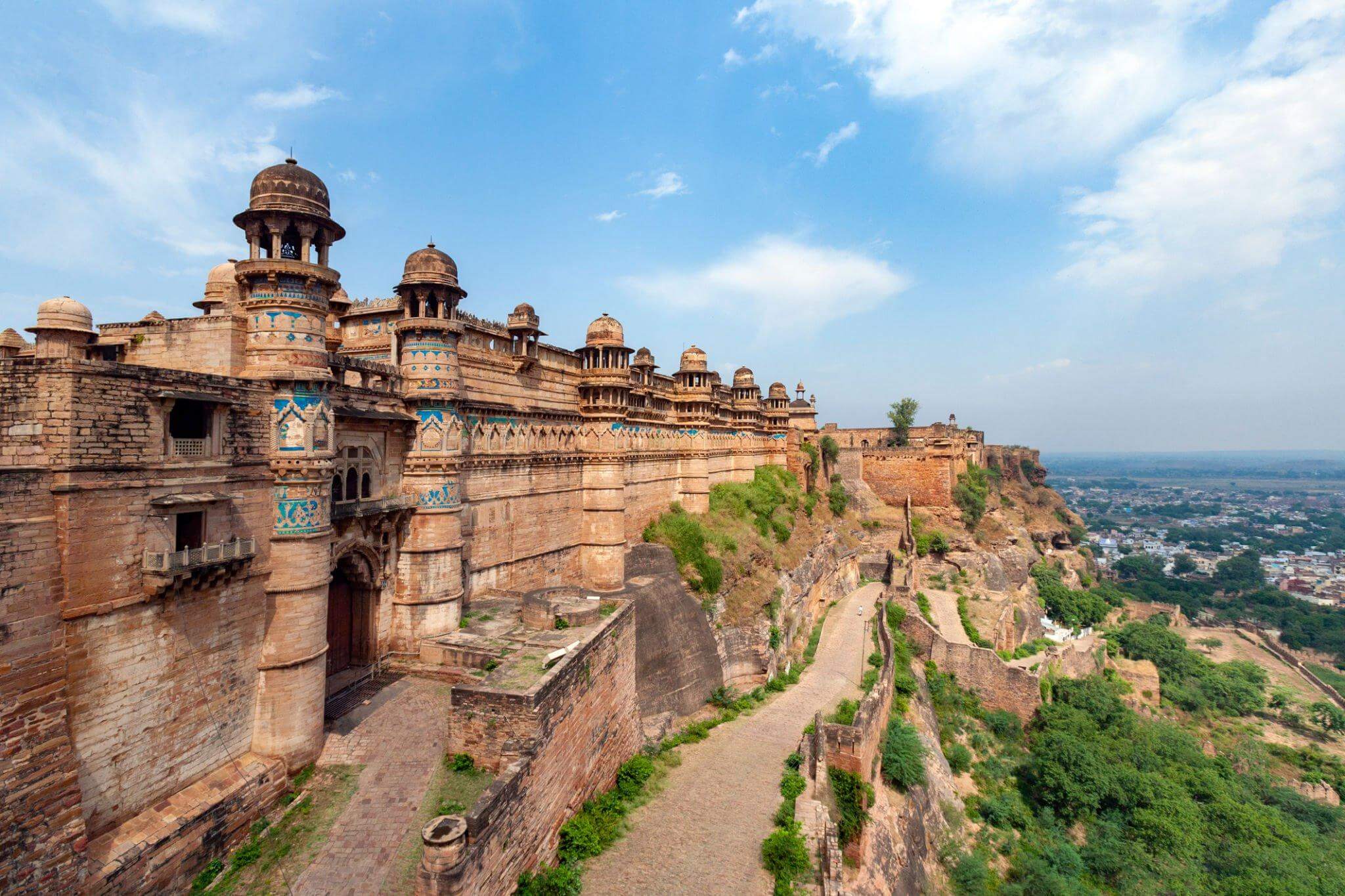
Welcome to Gwalior, a city that embodies the rich tapestry of India’s history and culture and is a must-visit on your Madhya Pradesh tour. Nestled in the heart of the state of Madhya Pradesh, Gwalior promises a mesmerizing blend of heritage, art, and spirituality, making it a highlight of your Madhya Pradesh tour. In this comprehensive guide, we invite you to embark on a journey through the enchanting streets of Gwalior and explore the myriad wonders it has to offer during your Madhya Pradesh tour.
The Royal Citadel: Gwalior Fort
Gwalior Fort – these two words alone are enough to transport you back in time to an era of opulence and power. As we enter the city’s heart, the colossal Gwalior Fort stands as a testament to the grandeur of the past. This majestic hill fort, constructed over 1,000 years ago, is a marvel of architecture, encompassing a vast expanse of history within its walls.
Architecture and Historical Significance
Gwalior Fort is renowned for its unique blend of architectural styles, ranging from Rajput to Mughal and even Gothic influences. This amalgamation of styles is a testament to the many dynasties that have ruled Gwalior over the centuries. The fort comprises a series of palaces, temples, and water tanks, all of which are marvels of design and engineering.
Historically, this fort has witnessed numerous battles and has been ruled by several prominent dynasties, including the Tomars, Mughals, Marathas, and Scindias. Its strategic location atop a hill made it an impregnable fortress, and its history is replete with tales of valor and conquest.
Must-See Attractions within the Fort
- Man Singh Palace: This palace is an architectural masterpiece, known for its stunning turquoise-tiled façade and intricate carvings. Explore the exquisite architecture and take in panoramic views of the city from the palace’s vantage points.
- Gujari Mahal: A testament to love, this palace was built by Raja Man Singh Tomar for his queen, Mrignayani. It now houses the Archaeological Museum, showcasing a remarkable collection of artifacts.
- Saas Bahu Temple: These intricately carved temples dedicated to Lord Vishnu are an architectural marvel. The larger temple (Saas) is adorned with exquisite sculptures, while the smaller one (Bahu) is equally impressive.
- Teli Ka Mandir: This temple, believed to be the oldest within the fort, exhibits a unique blend of architectural styles. Its towering vimana (temple tower) is a sight to behold.
- Gwalior Fort Light and Sound Show: As evening descends upon the fort, don’t miss the captivating light and sound show that narrates the history of Gwalior in a mesmerizing way.
The Enigmatic Tansen Tomb
As we continue our journey through Gwalior, a visit to the Tansen Tomb is a must for any music aficionado or history enthusiast. This tranquil garden is the final resting place of the legendary musician Tansen, one of the ‘Navaratnas’ (nine gems) at the court of Emperor Akbar.
Musical Legacy and Serene Ambiance
Tansen is renowned for his exceptional contributions to Indian classical music, and his tomb reflects the serene ambiance that his music evoked. The memorial garden is beautifully landscaped, with a pristine white marble tomb at its center. Visitors can often witness classical music performances in the evenings, paying homage to the musical genius.
The Magnificent Jai Vilas Palace
Our journey through Gwalior now takes us to the Jai Vilas Palace, an opulent residence that exudes grandeur and extravagance. Built during the reign of Maharaja Jayaji Rao Scindia in the 19th century, this palace is a testament to the royal affluence of the Scindia dynasty.
Extravagant Architecture and Artifacts
The Jai Vilas Palace is an architectural marvel, blending European and Indian styles seamlessly. The Durbar Hall of the palace is particularly breathtaking, with its massive chandeliers, ornate carpets, and an enormous silver train used to serve royal guests.
Visitors to the palace can explore its various sections, including the Scindia Museum, which houses an extensive collection of royal artifacts, weaponry, and art. The palace complex also boasts beautifully landscaped gardens, adding to its charm.
Temples Galore: The Spiritual Side of Gwalior
Gwalior isn’t just a city of forts and palaces; it’s also a spiritual haven with numerous temples that reflect India’s deep-rooted religious traditions. Here are a few noteworthy temples to explore:
Sas Bahu Temple
We’ve mentioned this temple earlier as part of the Gwalior Fort complex, but it deserves special attention for its exquisite architecture and spiritual significance. The intricate carvings and peaceful ambiance make it a serene spot for contemplation.
Sun Temple
Dedicated to the Sun God, this temple is a stunning example of Nagara-style architecture. Its beautifully sculpted walls and awe-inspiring sanctum are a testament to the skill of ancient Indian artisans.
Teli Ka Mandir
As mentioned before, this temple within the Gwalior Fort complex is a remarkable piece of architecture. Its towering vimana and intricately carved exterior are awe-inspiring.
The Local Cuisine
Gwalior’s Culinary Delights
No journey to Gwalior is complete without savoring its delectable cuisine. Indulge in the local flavors, where the richness of North Indian cuisine is on full display. From the savory kebabs to the sweet treats like jalebi and imarti, your taste buds are in for a treat. Don’t forget to try the iconic Gwalior ka Poha, a popular breakfast dish that has won hearts all over the country.
Exploring Gwalior: Practical Tips
Getting There and Around
To reach Gwalior, you can take a train or opt for air travel, with the Gwalior Airport serving as the gateway to the city. Once you’re here, local transportation options include auto-rickshaws and taxis, ensuring that you can explore the city comfortably.
Best Time to Visit Gwalior
Gwalior experiences a typical North Indian climate, with hot summers and cool winters. The best time to explore the city is during the months of October to March when the weather is pleasant, and outdoor activities are enjoyable.
Discover the Beautiful Nearby Wonders of Madhya Pradesh
Madhya Pradesh, often referred to as the “Heart of India,” is a land of enchanting landscapes, rich cultural heritage, and a treasure trove of historical marvels. But what makes this state even more remarkable is its proximity to several equally fascinating destinations. In this comprehensive guide, we invite you to embark on a journey with us as we explore the nearby places to Madhya Pradesh, ensuring you have a memorable travel experience.
- Jaipur – The Pink City
The capital of Rajasthan, Jaipur, is a kaleidoscope of colors, culture, and history. Known as the Pink City due to its distinct pink-colored buildings, Jaipur is a mesmerizing blend of tradition and modernity. Don’t miss the opportunity to visit the majestic Amer Fort, City Palace, and Hawa Mahal while you’re here. The bustling markets of Jaipur offer a delightful shopping experience where you can find exquisite handicrafts and traditional Rajasthani attire.
4.Exploring Indore: The Heart of Madhya Pradesh
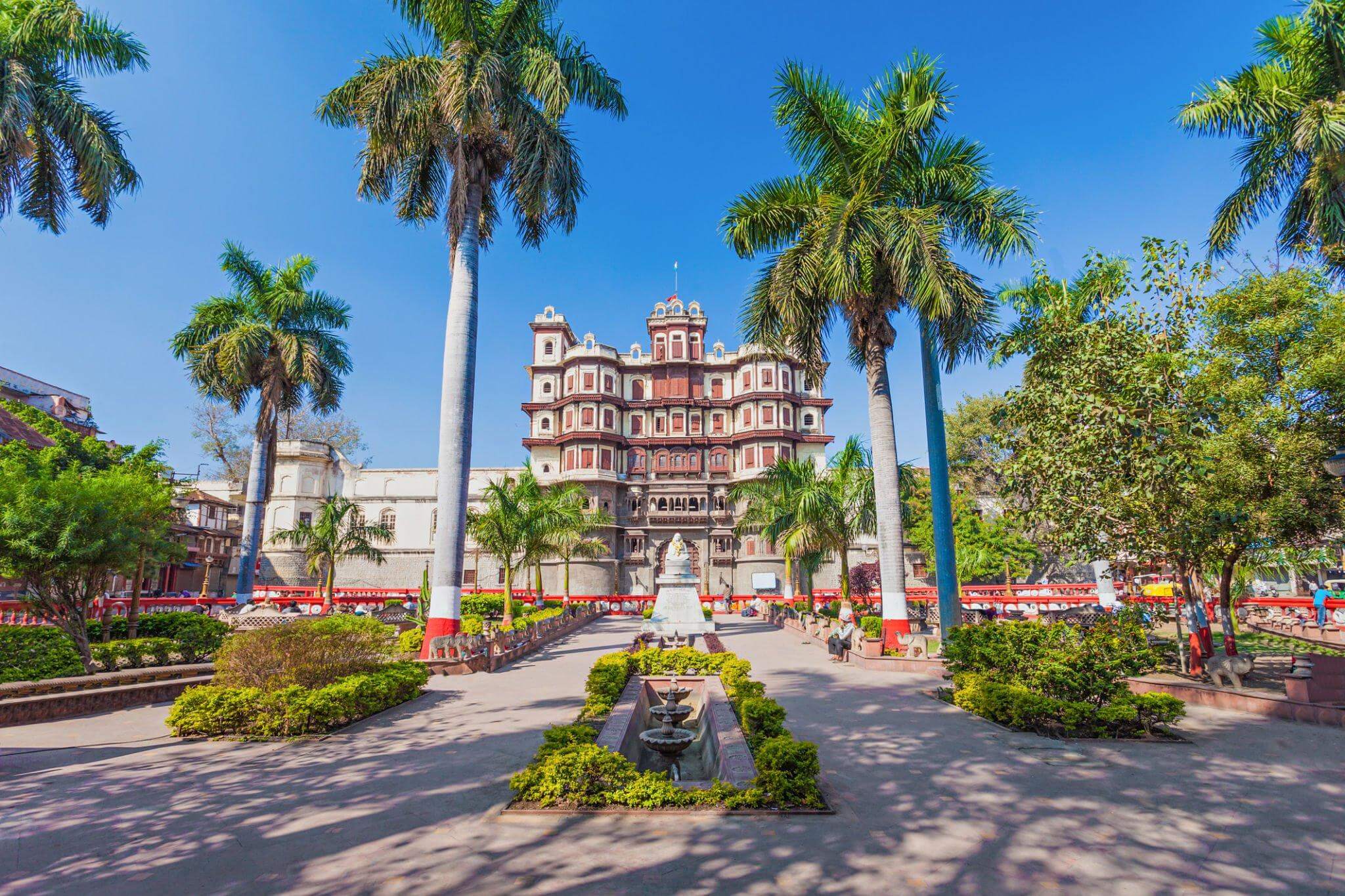
Welcome to Indore, the enchanting heart of Madhya Pradesh, India, a must-visit destination on your Madhya Pradesh tour. In this comprehensive guide, we will delve deeply into the rich tapestry of this vibrant city, offering you a detailed glimpse into its history, culture, cuisine, and attractions. Indore, often referred to as the ‘Mini Bombay,’ has emerged as a bustling metropolis with a unique blend of tradition and modernity, making it a standout stop on your Madhya Pradesh tour. So, fasten your seatbelts as we embark on a journey to uncover the treasures of Indore during your Madhya Pradesh tour
Rajwada Palace: A Glimpse into Royalty
Our first stop is the iconic Rajwada Palace, a symbol of Indore’s royal past. This seven-story marvel stands as a testament to the city’s regal heritage. Built by the Holkars, this architectural masterpiece is a fusion of Mughal, Maratha, and French styles. As you wander through its halls and courtyards, you’ll feel transported back in time to an era of opulence and grandeur.
Lal Bagh Palace: Where History Meets Elegance
The Lal Bagh Palace, another architectural gem, awaits your exploration. Built during the Holkar dynasty, this palace is a splendid blend of Indo-European architecture. The palace’s exquisite gardens, lavish interiors, and a museum showcasing artifacts from the Holkar era make it a must-visit for history enthusiasts and architecture aficionados.
Kanch Mandir: The Glass Temple
For a truly unique experience, head to the Kanch Mandir, or the Glass Temple. As the name suggests, this Jain temple is adorned with intricate glasswork that glistens in the sunlight. The temple’s serene atmosphere and breathtaking glass artistry create a mesmerizing ambiance that’s sure to leave you in awe.
Khajrana Ganesh Temple: Seek Blessings
Indore is known for its religious diversity, and the Khajrana Ganesh Temple is a significant pilgrimage site. Devotees from all over come to seek blessings from Lord Ganesha. The temple’s striking architecture and spiritual aura make it a place of solace and reflection.
Sarafa Bazaar: A Nighttime Extravaganza
As the sun sets, make your way to Sarafa Bazaar, a place that transforms into a foodie’s paradise after dark. Sample a wide array of Indore’s delectable street food, from spicy poha and crispy jalebi to mouthwatering chaats and sweets. The vibrant atmosphere and culinary delights make Sarafa Bazaar a must-visit for anyone exploring Indore’s nightlife.
Central Museum: Art and Antiquities
Art enthusiasts will appreciate the Central Museum, also known as the Indore Museum. It houses a remarkable collection of sculptures, coins, arms, and manuscripts, offering a glimpse into the cultural heritage of the region. A visit here is like stepping into a treasure trove of history.
Annapurna Temple: A Spiritual Experience
The Annapurna Temple is another sacred site in Indore, dedicated to the goddess of food and nourishment. The temple’s striking architecture and peaceful surroundings provide a serene environment for prayer and meditation.
Pipliyapala Regional Park: Nature’s Oasis
If you crave some tranquility amidst nature, visit the Pipliyapala Regional Park. This scenic park features a stunning artificial lake, a musical fountain, and beautifully landscaped gardens. It’s a perfect spot for a leisurely stroll or a peaceful picnic.
5.Explore Ujjain: A Captivating Journey Through Time
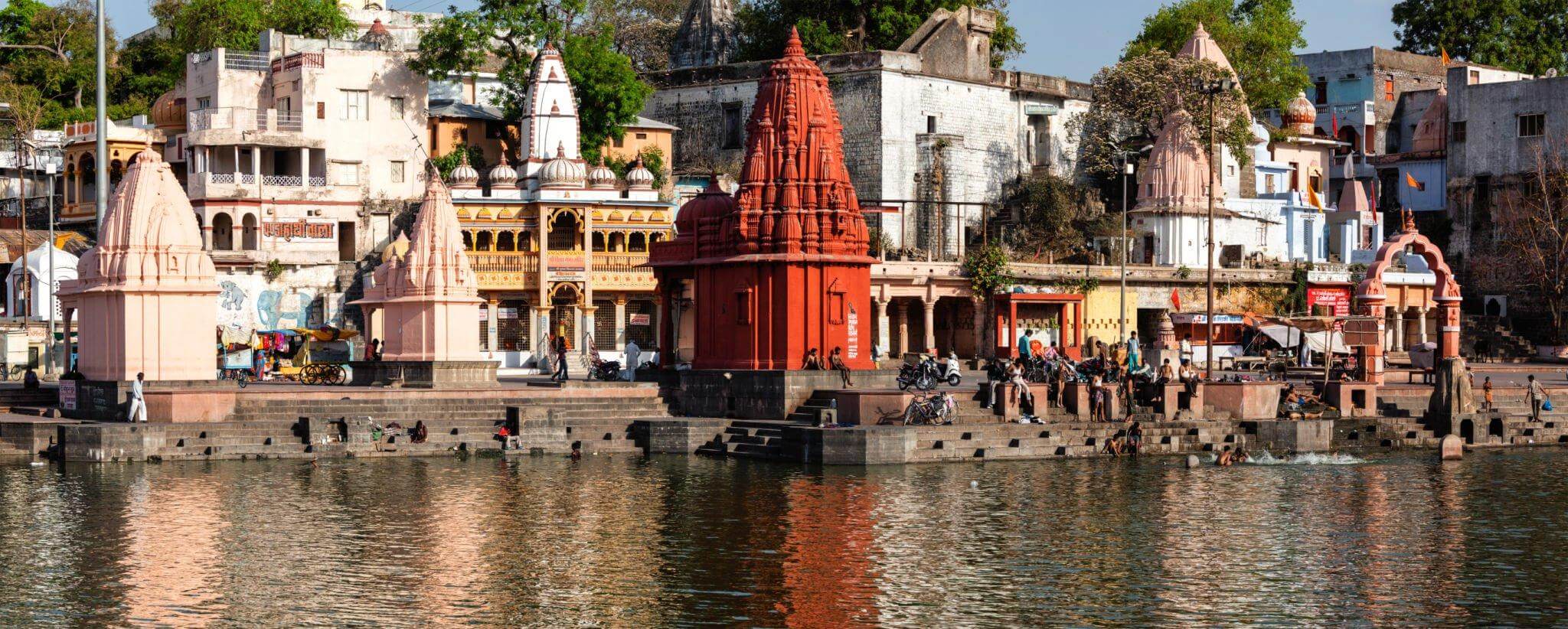
Located in the heart of India, Ujjain is a city that resonates with history, spirituality, and culture. With a legacy dating back thousands of years, this enchanting destination is a treasure trove of experiences waiting to be discovered on your Madhya Pradesh tour. In this comprehensive guide, we invite you to embark on a journey through Ujjain’s rich tapestry of sights, sounds, and stories that make it a destination worth exploring during your Madhya Pradesh tour. So, get ready to immerse yourself in the charm of Ujjain as you explore its wonders on your Madhya Pradesh tour.
Unveiling Ujjain’s Mystical Charm
Mahakaleshwar Temple: The Spiritual Heartbeat
Ujjain is synonymous with spirituality, and the Mahakaleshwar Temple stands as an epitome of this sacred connection. This revered temple is dedicated to Lord Shiva and is one of the 12 Jyotirlingas in India. It attracts millions of pilgrims and tourists alike who seek blessings and solace in its divine aura. The temple’s unique feature is the ‘Bhasma Aarti,’ a ritual where the idol of Lord Shiva is adorned with sacred ash, creating an awe-inspiring spectacle.
Simhastha Kumbh Mela: A Divine Confluence
Ujjain is renowned for hosting the Kumbh Mela, a grand congregation of devotees that takes place every 12 years. This sacred event witnesses millions of pilgrims taking a dip in the holy waters of the Shipra River to cleanse their sins. The next Simhastha Kumbh Mela is set to be a momentous occasion, attracting pilgrims and travelers from all corners of the globe.
Discovering Ujjain’s Historical Heritage
Ujjain Observatory: An Astronomical Marvel
Stepping into the Ujjain Observatory is like entering a time machine. This ancient observatory, also known as the Jantar Mantar, is an architectural marvel that dates back to the 18th century. It houses a collection of astronomical instruments that were used for celestial observations. The Samrat Yantra, the largest sundial in the world, is a highlight that showcases the scientific prowess of ancient India.
Vikram Kirti Mandir: A Tribute to King Vikramaditya
Ujjain pays homage to its illustrious past through the Vikram Kirti Mandir. This museum is a dedication to the legendary King Vikramaditya, known for his wisdom and valor. The museum’s exhibits narrate the tales of his reign and contributions to Ujjain’s cultural heritage. It’s a must-visit for history enthusiasts and those curious about India’s glorious past.
Indulge in Ujjain’s Culinary Delights
Poha and Jalebi: Ujjain’s Breakfast of Champions
No visit to Ujjain is complete without savoring the local breakfast delicacies – Poha and Jalebi. Poha, a dish made from flattened rice, is garnished with spices, peanuts, and fresh coriander, offering a burst of flavors. Pair it with hot and crispy Jalebis, sweet swirls of deep-fried dough soaked in sugar syrup, for a perfect start to your day.
Ujjaini Chaat: A Spicy Affair
For those with an adventurous palate, Ujjaini Chaat is a culinary adventure not to be missed. This spicy street food combines various elements like crispy papdis, tangy tamarind chutney, and aromatic spices, creating an explosion of taste in every bite. The vibrant street food scene in Ujjain is a testament to its culinary diversity.
Exploring Ujjain’s Hidden Gems
Ram Ghat: A Tranquil Riverside Retreat
Amidst the bustling city, Ram Ghat offers a serene escape. Situated on the banks of the Shipra River, this sacred ghat is a place of spiritual significance. Devotees gather here for rituals and prayers, especially during the Kumbh Mela. The picturesque view of the river during sunset is a sight to behold and makes it a perfect spot for introspection.
Sandipani Ashram: A Historical Landmark
Ujjain is not just a city of temples but also a place where knowledge thrived. The Sandipani Ashram is an ancient hermitage where Lord Krishna and Sudama received their education. Today, it stands as a symbol of wisdom and learning. The peaceful ambiance and the echoes of ancient teachings make it a unique place to visit.
Bhartrihari Caves: Nestled on the banks of the Shipra River, the Bhartrihari Caves are associated with the renowned philosopher-saint Bhartrihari. These ancient caves are not only a testament to the city’s historical significance but also offer a serene atmosphere, perfect for introspection and meditation.
Chintaman Ganesh Temple: Dedicated to Lord Ganesha, the Chintaman Ganesh Temple is another jewel in Ujjain’s spiritual crown. It is believed that praying here can relieve one of worries and troubles (‘Chintaman’ translates to reliever of worries). The intricate architecture and the palpable aura of devotion make this temple a must-visit for pilgrims and tourists alike.
6.Kanha National Park: A Wildlife Wonderland
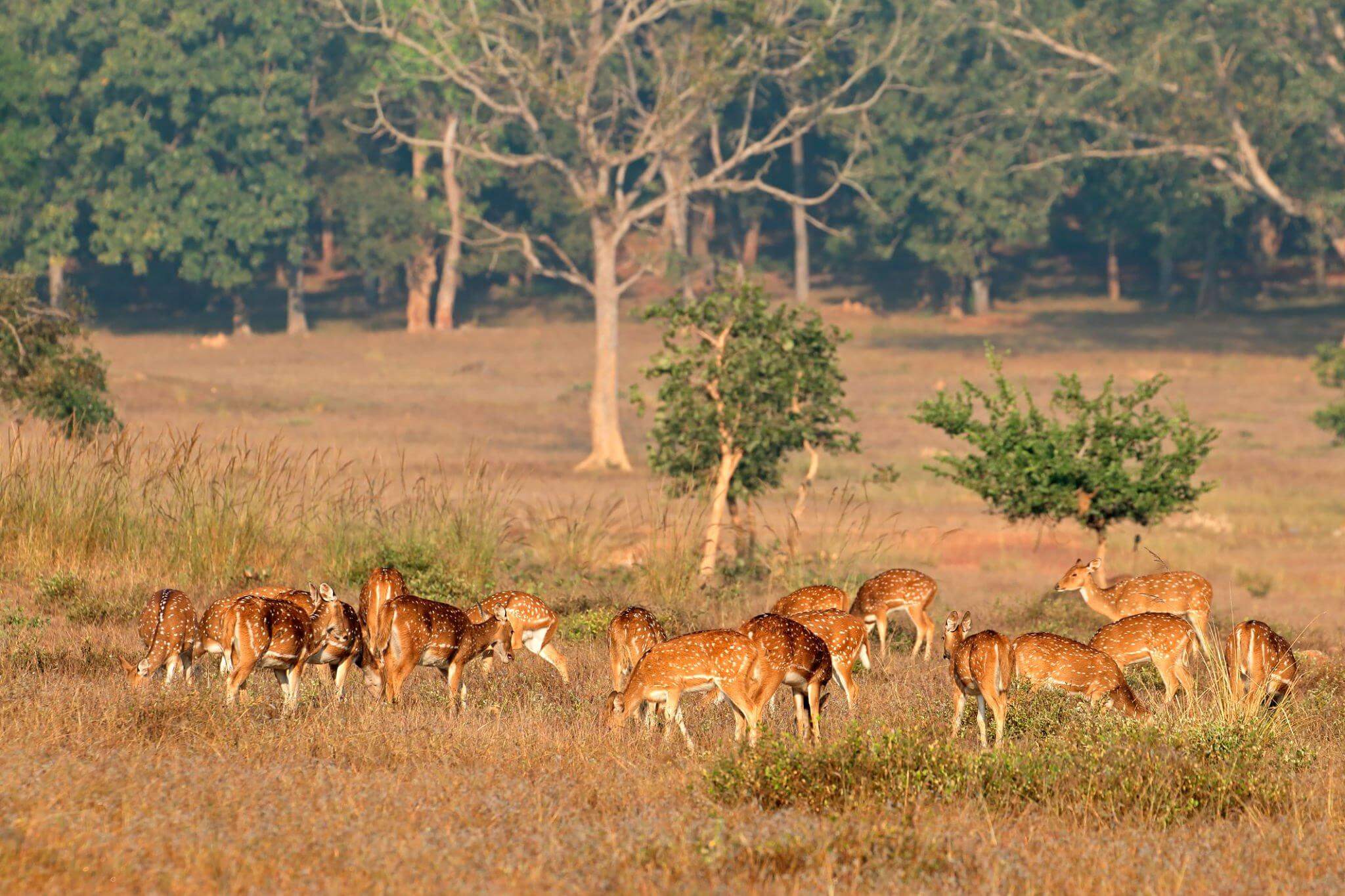
Welcome to Kanha National Park, a pristine wilderness nestled in the heart of India. In this article, we invite you to embark on a virtual journey through this magnificent natural wonderland. As part of your Madhya Pradesh tour, we, at Kanha National Park, take immense pride in presenting to you a comprehensive guide to this ecological treasure trove. Our goal is not just to inform, but to immerse you in the breathtaking beauty and rich biodiversity that defines Kanha National Park. So, get ready to explore this gem during your Madhya Pradesh tour and experience its wonders firsthand
Exploring the Flora
The Lush Canopies
Kanha National Park is renowned for its lush green canopies that stretch as far as the eye can see. The park is primarily covered in sal and bamboo forests, creating a mesmerizing landscape that changes with the seasons. These dense forests serve as the ideal habitat for a plethora of wildlife species, making Kanha a top choice for nature enthusiasts and wildlife photographers.
Diverse Plant Life
Apart from sal and bamboo, the park boasts a rich diversity of flora, including various species of trees, shrubs, and medicinal plants. The medicinal plants found here have been used for centuries by local communities for their healing properties. The park’s unique vegetation also supports the diverse wildlife that inhabits this region.
Wildlife Extravaganza
Royal Bengal Tigers
Kanha National Park is perhaps best known for its population of Royal Bengal Tigers. These majestic predators roam freely in the park’s dense forests, offering visitors a chance to witness them in their natural habitat. The park’s successful conservation efforts have made it a sanctuary for these endangered big cats.
Barasingha Deer
The Barasingha, or Swamp Deer, is another iconic species that calls Kanha home. Known for their distinctive antlers, these deer are a sight to behold during the monsoon season when they graze in the lush meadows of the park. Kanha is one of the few places where you can spot this unique species.
Colorful Birdlife
For bird enthusiasts, Kanha National Park is a paradise. The park is home to over 300 bird species, including the Indian Paradise Flycatcher, Golden Oriole, and the majestic Indian Eagle-Owl. Birdwatching here is an absolute delight, with every moment offering a chance to spot a new feathered friend.
Exploring the Park
Safari Adventures
To truly experience Kanha National Park, embark on a safari adventure. The park offers both Jeep and elephant safaris, each providing a different perspective of the wildlife and landscape. Whether you’re tracking tigers or observing the park’s avian residents, a safari is an unforgettable experience.
Kanha Museum
For a deeper understanding of the park’s history and biodiversity, make sure to visit the Kanha Museum. It’s a treasure trove of information, showcasing the flora and fauna of the region, as well as the conservation efforts that have made Kanha a global model for wildlife preservation.
Conservation and Sustainability
We, at Kanha National Park, are committed to the conservation and sustainable management of this unique ecosystem. Our efforts extend beyond the park boundaries, as we work closely with local communities to promote eco-friendly practices and foster a sense of responsibility towards nature.
Frequently asked questions (FAQ)
Q 1.What is the best time to visit Madhya Pradesh?
Madhya Pradesh experiences a diverse climate, but the best time to visit is during the winter months, from October to March. The weather is pleasant, making it ideal for exploring the state’s attractions.
Q 2.How do I reach Madhya Pradesh?
Madhya Pradesh is well-connected by air, rail, and road. You can choose to fly into major cities like Bhopal or Indore, or take a train or bus from neighboring states.
Q 3.What are the must-visit attractions in Madhya Pradesh?
- Khajuraho Temples: Known for their intricate erotic sculptures.
- Bhimbetka Caves: UNESCO World Heritage site with ancient cave paintings.
- Gwalior Fort: A historic fort with stunning architecture.
- Bandhavgarh National Park: Famous for tiger sightings.
- Ujjain: A sacred city on the banks of the River Shipra.
Q 4.Is Madhya Pradesh safe for tourists?
Yes, Madhya Pradesh is generally safe for tourists. However, it’s essential to take standard precautions like avoiding isolated areas at night and keeping your belongings secure.
Q 5.What is the cuisine of Madhya Pradesh?
Madhya Pradesh offers a variety of delectable dishes, including Poha, Dal Bafla, and Seekh Kebabs. Don’t forget to try the sweets like Jalebi and Imarti.
Q 6.Are there any famous festivals in Madhya Pradesh?
Madhya Pradesh celebrates numerous festivals with great enthusiasm. The most famous ones include Diwali, Holi, and Navratri. During these times, the state comes alive with colors and traditions.
Q 7.Can I explore wildlife in Madhya Pradesh?
Absolutely! People know Madhya Pradesh for its wildlife sanctuaries and national parks. You can go on a safari in Bandhavgarh or Kanha National Park to spot tigers, leopards, and other wildlife.
Conclusion
In conclusion, Madhya Pradesh is a treasure trove of cultural heritage, natural beauty, and thrilling adventures waiting to be explored. With its rich history, diverse landscapes, and abundant wildlife, this central Indian state offers a unique and unforgettable travel experience for every type of traveler. Whether you’re exploring the ancient temples of Khajuraho, embarking on safaris to witness the majestic Bengal tigers, or immersing yourself in the vibrant traditions of its people, a Madhya Pradesh tour is bound to leave you with lasting memories and a deep appreciation for the heart of India. So, pack your bags and get ready for the journey of a lifetime, because Madhya Pradesh tour is bound to leave you with lasting memories and a deep appreciation for the heart of India.



